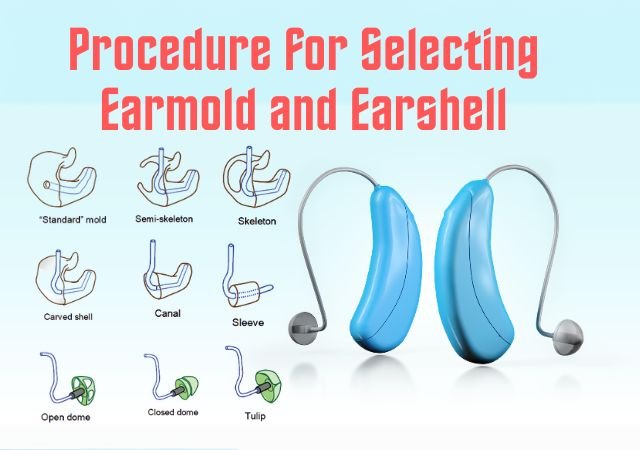 Gilliam Autism Rating Scale 3 (GARS-3) Scoring Interpretation: The Gilliam Autism Rating Scale is among the most widely used autism assessment instruments worldwide, it is in its third edition. The GARS-3 (Gilliam Autism Rating Scale) is designed to help teachers, parents, and clinicians identify autism in presence, and provides an estimated severity.
Gilliam Autism Rating Scale 3 (GARS-3) Scoring Interpretation: The Gilliam Autism Rating Scale is among the most widely used autism assessment instruments worldwide, it is in its third edition. The GARS-3 (Gilliam Autism Rating Scale) is designed to help teachers, parents, and clinicians identify autism in presence, and provides an estimated severity.
The scale’s items align with the 2013 diagnostic criteria for autism spectrum disorder outlined by the APA in the Diagnostic and Statistical Manual of Mental Disorders–Fifth Edition (DSM-5). The GARS-3 provides standard scores, percentile ranks, severity levels, and the probability of Autism. Comprising 56 articulated items, the instrument delineates the characteristic behaviors associated with autism. These items are categorized into six subscales: Restrictive/Repetitive Behaviors, Social Interaction, Social Communication, Emotional Responses, Cognitive Style, and Maladaptive Speech.
- Author:
- Publication Date: 2013
- Age Range: 3 Years to 22 years
- Administration Time: 5 to 10 Minute
Kit for Gilliam Autism Rating Scale 3 (GARS-3) Scoring Interpretation
The Gilliam Autism Rating Scale-Third Addition (GARS-3) is used to identify an individual as possibly having Autism Spectrum Disorder (ASD) and use to aid in treatment. This assessment comes in a kit, which consists of a number of elements to support a complete and viable evaluation process:
Examiner’s Manual:
- Examiner: The instructor contains all the guidelines needed for GARS-3 administration.
- It describes the proper ways to conduct the assessment, including steps to take in administering the test and guidelines for scoring.
- Furthermore, the test manual provides critical technical descriptions of the GARS-3, including details on how the GARS-3 was developed, validated, and how it should be interpreted.
Summary/Response Forms:
- These are filled out by the examiner to record important information about the person in question.
- The forms collect demographic information about the examinee and record their responses to the items on the GARS-3 scale.
- The data inside these forms is really helpful in the diagnosis of autism spectrum disorder, and for professionals and clinicians who deal with diagnosing this condition.
Manual Booklet for Instructional Objectives for Individuals with Autism:
- It serves as a resource for clinicians to refer parents and professionals in creating educational targets and behavioral strategies.
- It utilizes the information derived from the GARS-3 to help leverage educational and behavioral techniques designed particularly for individuals with autism.
- As a guide, it gives practical tips on ways to be most helpful in promoting the development of your child with ASD.
In conclusion, the GARS-3 kit serves as a multifaceted package that directs professionals toward the pathway of diagnosing Autism Spectrum Disorder. The Examiner’s Manual offers extensive details on administration and scoring, the Summary/Response Forms outline important details, and the Instructional Objectives booklet helps shape focused interventions, ensuring that clinicians have everything they need to conduct a comprehensive evaluation and plan appropriate supports.
Subscales for Gilliam Autism Rating Scale 3
The GARS-3 includes six separate subscales that have been developed to correspond to the criteria for autism spectrum disorder outlined in both DSM-5 and the American Psychiatric Association (APA). The scale is composed of a total of 58 items, organized in six subscales:
1. Restricted/Repetitive Behaviors (13 items)
2. Social Interaction (14 items)
3. Social Communication (9 items)
4. Emotional Responses (8 items)
5. Cognitive Style (7 items)
6. Maladaptive Speech (7 items)
Different behaviors, communication skills, and these— GARS: Gilliam Autism Rating Scale. The following descriptions are very general, purposefully, and may be applicable to multiple settings (e.g., mental health words, developmental disorder words):
Restricted/Repetitive Behaviors (13 items)
These behaviors include stimming, which are repetitive movements that people may do, as well as insistence on sameness (doing the same thing over and over again), interest in a specific subject, unusual patterns of sensory behavior, etc.
Social Interaction (14 items)
Items related to social interaction relate to the ability to engage and interact with others. These may present as difficulties with forming attachments or relationships, lack of interest in social situations, difficulty understanding social situations, or leading to inappropriate responses socially.
Social Communication (9 items)
Items that assess social communication involve the use of verbal and nonverbal communication in social contexts. Examples of challenges in this area may include deficits in starting or maintaining conversations, stiff use of gestures or facial expressions, and deficits in comprehending and using figurative language.
Emotional Responses (8 items)
This category refers to an individual’s emotional regulation and expression. Things would be unusual emotional responses, lack of ability to identify and understand the emotions of themselves and those around them, failure to adapt emotional responses to different scenarios, etc.
Cognitive Style (7 items)
Items about cognitive style pertain to how an individual prefers to process information and think. It could involve tendencies for rigidity/inflexibility in thinking, impairment of abstraction, or struggles in transferring cognitive strategies across tasks/situations.
Maladaptive Speech (7 items)
Individuals whose speech falls into the maladaptive items of the language do not conform to the normal aspects of the language. This may involve echolalia (repetition of words or phrases), atypical prosody (intonation and rhythm of speech), difficulty with starting or maintaining conversation, or using language in an inappropriate way.
These categorizations have been employed in their assessment and diagnosis, especially with neurodevelopmental or psychiatric conditions like Autism Spectrum Disorder (ASD). These tend to be descriptions of trending symptoms, as the code is updated continually based on diagnosis, however, understand, these are therefore broad and should be a part of a complete evaluation by HCP.
Gilliam Autism Rating Scale 3 (GARS-3) Scoring Interpretation
At present, the behaviors of the child are evaluated using a four-point Likert scale:
- ‘Not at all like the individual’ (0)
- ‘Not much like the individual’ (1)
- ‘Somewhat like the individual’ (2)
- ‘Very much like the individual’ (3)
If the rater is unsure whether a behavior was present or not, she can be encouraged to observe longer or to use prior ratings as a guide. Parents can provide ratings on their own or ideally during an interview with an assessor who will directly observe the child.
Subscale scores are aggregated and a standardized score is calculated based on the normative data from the American children with Autism Spectrum Disorder (ASD). Scale scores on a subscale are higher for more severe autistic behaviour. These scaled scores are summed to calculate a composite score referred to as the Autism Index, the most accurate standardized score for identifying individuals with ASD.
The Autism Index scores are grouped into categories reflecting the level of severity of autism:
- Unlikely
- Probable
- Very likely
These categories also give some hint about what support the child will need:
- No ASD support required
- Minimal support required
- Substantial support required
- Very substantial support required
The common categories correspond to the DSM-5 (Diagnostic and Statistical Manual of Mental Disorders, Fifth Edition) diagnostic criteria.
Features of Gilliam Autism Rating Scale 3 (GARS-3)
The GARS-3 (Gilliam Autism Rating Scale, Third Edition) includes several important features that improve the scale’s usefulness for and accuracy in assessing Autism Spectrum Disorder (ASD) according to the DSM-5 diagnostic criteria:
Alignment with DSM-5 Criteria:
The GARS-3 items and subscales are designed to closely parallel the diagnostic criteria within the DSM-5 for Autism Spectrum Disorder. Training data is extended until October 2023, assuring the reviewer that the assessment tool is up to date and compliant with clinical standards.
Addition of 44 New Items:
It includes 44 additional items, significantly broadening the content of the scale. Including additional measures has broadened the scope of behaviors and traits that the tool assesses in relation to ASD, allowing for a wider evaluation to be reached.
Empirically Validated Subscales:
Empirical validation of the 6 individual subscales within the GARS-3 has been performed, demonstrating their validity and sensitivity in detecting children with Autism Spectrum Disorder. So, this validation process confirms the reliability of the subscales on assessing the classification and diagnosis of ASD.
Normative Data Collection:
Normative data based on 1,859 subjects were collected in 2010 and 2011. This large data set serves as a comparison for assessing individual results against a reference population, intended to increase interpretability of the assessment findings.
Demographic Alignment:
The demographic characteristics of this normative sample are consistent with those described by the U.S. Bureau of the Census (2011). Thus, the normative data are generalisable to the population at large, increasing reliability and generalisability of the assessment.
Interpretation Guide in the Examiner’s Manual:
The Examiner’s Manual even has a separate interpretation guide that researchers have found to be a fast and easy way for examiners to evaluate the probability of Autism Spectrum (ASD) and the severity. This functionality helps ensure assessment results are correctly understood and interpreted consistently over time.
Diagnostic Validation Form:
To confirm that DSM-5 criteria were met, the GARS-3 includes a diagnostic validation form. This instrument is designed to ensure that the test results match the criteria for Autism Spectrum Disorder (ASD) in order to increase the accuracy and reliability of the diagnosis.
Validity and Reliability of Gilliam Autism Rating Scale 3 (GARS-3)
Included are details on the reliability and validity of the GARS-3 (Gilliam Autism Rating Scale, 3rd edition)– a diagnostic assessment used for autism spectrum disorder. So, here are the highlights:
Internal Consistency (Content Sampling) Reliability:
- They are greater than. 85.
- Autism Index coefficients are greater than. 93.
- This indicates a strong level of agreement in measuring the desired constructs concerned by the test.
Test-Retest (Time Sampling) Reliability:
- Coefficients exceed. 80 for subscales and. 90 for Autism Indexes.
- This means that the test will come up with the same result consistently, further confirming its effectiveness.
Interrater Reliability:
- Intraclass coefficients were greater than. 80 for subscales and. 84 for Autism Indexes.
- High inter-rater reliability means that raters/observers agree closely.
Correlations with Other Diagnostic Tests:
- Correlations with established autism diagnostic tests are large or very large.
- These also indicate that the GARS-3 appears to have a good correspondence with established diagnostic measures, substantiating its concurrent validity.
Validity Studies:
- New research shows the test’s validity among different subgroups and the general population.
- This further supports the idea that the GARS-3 is good at accurately measuring autism in various populations.
Binary Classification Studies:
- New research shows the test’s validity among different subgroups and the general population.
- This further supports the idea that the GARS-3 is good at accurately measuring autism in various populations.
Factor Analyses:
- Confirmatory factor analysis and exploratory factor analysis support the theoretical and empirical basis of the subscales.
- This is evidence that the test as theorized measures the intended constructs.
Additional Validity Evidence in the Manual:
- The manual also provides additional evidence of validity, beyond the studies mentioned.
- This may involve in-depth description of the theoretical foundation and empirical validation of the test.
In summary, the GARS-3 seems to be a promising tool for the assessment of autism spectrum disorder given the internal consistency, test-retest reliability, interrater reliability, correlations with other instruments, multiple validity studies, accurate binary classification and confirmatory/exploratory factor analyses that support the reliability/validity. The information is mentioned in the context of the rigorous validation process conducted to guarantee the strength and precision of the testing outcomes.
FAQs about Gilliam Autism Rating Scale 3 (GARS-3) Scoring Interpretation
1. What is the purpose of the Gilliam Autism Rating Scale 3 (GARS-3)?
TheGARS-3 is a diagnostic interval instrument for people with Autism Spectrum Disorder (ASD) screening. It assists teachers, families and therapists identifyautism and evaluate its severity.
2. How many items and subscales are there in the GARS-3, and how are they categorized?
The GARS-3 contains 56 items and is organized into six subscales: Restrictive/Repetitive Behaviors,Social Interaction, Social Communication, Emotional Responses, Cognitive Style, and Maladaptive Speech.
3. How are behaviors assessed in the GARS-3, and what does the Likert scale represent?
For behavior evaluation, we used a 4-point Likert scale, described in Table 3, with possible responses of: “Not at all like the individual” (0), “Not much like the individual” (1), “Somewhat like the individual” (2); and “Very much like the individual” (3). Higher scores on the checklist suggest more severeautistic behavior.
Each score is based on the scoring interpretation of the subtypes found in the GARS-3—social, communication, and stereotyped behavior—resulting in the Autism Index, which reflects the absolute value of all three subtypes.
4. What is the Autism Index, and how is it used in the scoring interpretation of the GARS-3?
The Autism Index (AI) is a composite score based onthe sum of the scaled scores for all subscales. It describes severity as Unlikely, Probable or Very likely, so you have an idea in general thetypes of support a child may need over time.
5. What features make the GARS-3 a reliable and effective tool for assessing Autism Spectrum Disorder?
According to this fact sheet, GARS-3 is:Compatible with DSM-5;Includes 44 new items to give a complete picture;Provides empirically validated sub-scales;Collects norms;Is age and gender matched;Has interpretation manuals;Has a diagnostic validation form. These features make it trustworthy and precise.
References:
- GARS-3: Gilliam Autism Rating Scale–Third Edition – Pro-Ed
- Assessment in Speech Language Pathology A Resource Manual 5. Auflage, Kenneth G. Shipley, Julie G. McAfee [Buch]
- The American Academy of Pediatrics (AAP) in their guidelines on developmental surveillance and screening (AAP)







0 Comments